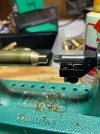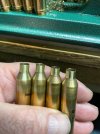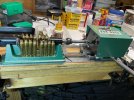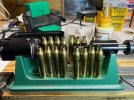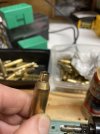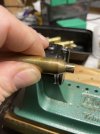HuntingBronco
Well-Known Member
Why not? RCBS says NO. Have had Trim Pro-Power for years and can't see why not, so for $47, I figured I'd give it a try. Set stop to stop at shoulder. Loosen thumbscrews so it manual feeds... seems to work like a charm. I'll attach a photo and video (couldn't) Seems to be very consistent, coming out at .135" Anyone see anything bad going on here? I can attach different photos....

